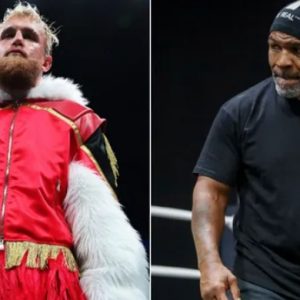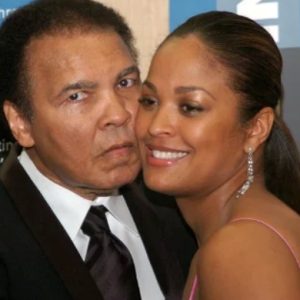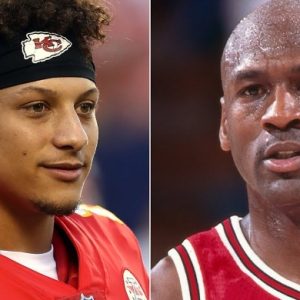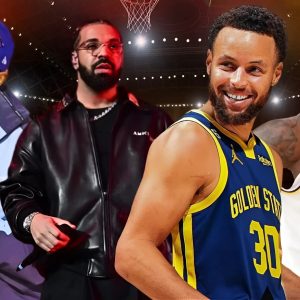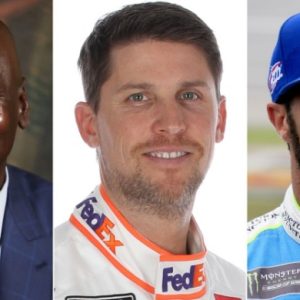He became Muhammad Ali’s dear friend, a young man with a camera and a dream 50 years ago who grew into The Greatest in his field, and over the weekend, Garden photographer George Kalinsky mourned the passing of the heavyweight champion of everyone’s world, and reminisced about an unforgettable journey that shaped his life.

Kalinsky would chronicle the buildup to The Fight of the Century, Ali-Frazier I, and all of Ali’s Garden fights after that, and the bond between him and The Greatest in the ring kept growing over the years.
Before he got his iconic photos of Ali and Frazier head to head and nose to nose at Frazier’s Philadelphia gym, Kalinsky got in the ring with each of them for one round.
“They would sort of swing at me, and I would have my camera in front of my face and I told each one — I started with Ali — I said, ‘Muhammad, I want you to make believe my camera is Joe Frazier.’ I want people to see what it is to face you, what it looks like,’ ” Kalinsky said.
“I could not believe that Ali could swing and hit a needle exactly where he wanted. I had no fear at all because his precision was so sharp. And at the end he puts his two hands up in victory and he says, ‘I am The Greatest.’
“I started doing the same thing with Joe. That lasted seven seconds because Joe had no control. And I realized immediately, I said, ‘Joe, that’s enough, you’re gonna hit me.’ Joe did not have that precision, but what he did have was the power and the ability to make me really afraid.”
A conversation with Ali before his third fight, at Yankee Stadium, with Ken Norton in 1976, rang louder than any boxing bell for Kalinsky Saturday. It was after Ali had showered, after he had asked Kalinsky if he wanted to capture him from the back of a station wagon doing roadwork at 4 a.m. Kalinsky was sitting at the edge of the bed in Ali’s Concord Hotel room.
“I said, ‘Muhammad, you shouldn’t be fighting,’ ” Kalinsky recalled. “‘You’re gonna damage yourself in such a way that it’ll be irreparable.’ What do you think?
“He said, ‘I know you’re right, but the ring is my stage. If I don’t fight, people are gonna forget who I am. But right now, I think I have the most famous face in the world, and that’s how I make my living.”
Kalinsky was asked what prompted his advice.
“I saw his confidence changing to concern,” he said.
Sadly, for five more years, Ali kept fighting, kept deteriorating. Kalinsky last saw him at Frazier’s funeral 4 ½ years ago in Philadelphia.
“He looked very frail. He seemed to be very thin and very smallish. I remember being almost afraid to go over to him because it was like a different person that I was seeing,” Kalinsky said.
But he did.
“His eyes started to smile,” Kalinsky said. “I went through our lives together and some of the moments that we had. He put his hand out and touched me when I said Rope-A-Dope.”
You see, Kalinsky actually changed the course of boxing history, and Ali’s career, one month before Ali’s 1974 fight against George Foreman in Zaire.

“Ali calls me up. ‘Can you meet me Monday at 6:30 in the Garden with [Garden guru] John Condon?’” Kalinsky said. “I just want to talk to you.”
They met in the press room at an empty Garden.
“‘I’m fighting George Foreman in another month,’ ” Kalinsky recalls Ali saying. “‘He’s too young, he’s too fast, he’s too quick, he’s too strong, he’s too big — I can’t beat him. I don’t know what to do.’ ”
There was silence. Kalinsky thought back to the first time he watched Ali train 50 years ago at the Fifth Street Gym in Miami before the Ernie Terrell fight, and finally said: “You know Muhammad? You’ve been training all your life for this fight. What you were always doing was leaning against the ropes and you let your sparring partner hit you and hit you and hit you in the stomach. So what you have to do with Foreman is the same thing — act like a dope on the ropes. The more he pounds away at you, the more tired he’s going to get.”
A playful cracked:“You want me to be a Rope-A-Dope!”
Over the years, in his trademark whisper, Ali would thank Kalinsky.
“It worked,” Ali said.

Kalinsky’s journey began on a day when he had interviewed with the Miami Herald for a sports and political cartoonist job.
“I was walking on Fifth Street and I see Howard Cosell on the corner, and as I asked him what he was doing on the corner, he said, ‘I’m here to interview the Champ,’” Kalinsky recalled.
Ali was training for his fight with Terrell. “And at that moment, Ali was crossing the street, shook hands with Cosell, and they both went into the Fifth Street Gym. So I followed them, and Angelo Dundee stopped me at the door and said, ‘You can’t come in the gym unless you pay a buck.’ And it just came out of my mouth, I said, ‘I’m the photographer at Madison Square Garden.’ And Angelo looks at me and says, ‘OK comedian, come on in.’” A week later, he became the Garden photographer.

Parkinson’s doesn’t care if you’re The Greatest. Kalinsky cried when he learned of his friend’s passing.
“Muhammad Ali had a heart that was bigger than anyone else. I just felt tremendously lucky and honored that I was able to share a certain amount of time with him, and that whenever there’s a situation that I run into, where I say, ‘Gee, I don’t know if I’m going to be able to do that or not, I think of Muhammad Ali and I immediately know I’m going to do it,” Kalinsky said. “I’m gonna get it done.”
